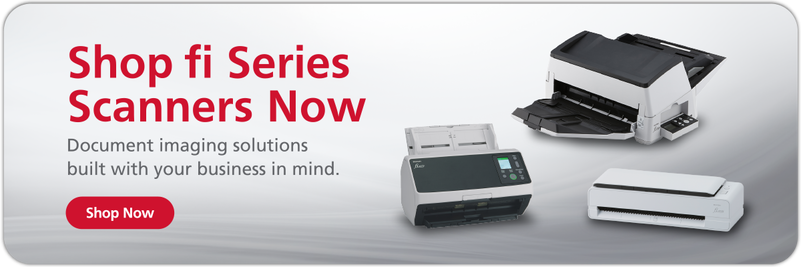The right equipment lets you preserve your possessions and make trading easier.
Sports cards are more than simple collectibles. They are historical artifacts, treasured personal mementos, and valuable commodities. No matter why they’re precious to you, scanning sports cards can help preserve and organize your collection. A digital copy ensures you can safely admire them without risk of lowering their value or degrading their imagery. Digitization also makes it easier to trade or sell cards. However, the process must be done with care to ensure your cards stay preserved and your scans are accurate and clear. Read on to learn everything you need to know about scanning sports cards.
Digitizing your trading card collection is a great way to organize and share it while preserving your most valuable cards. Discover everything you need to know in our guide.
Benefits of digitization
For a sports card to retain its maximum value as long as possible, it should ideally be handled as little as possible. Whenever a card leaves its physical storage location, it could be bent, ripped, damaged by spills, or faded by exposure to sunlight. Then when it’s time to return the card to its place in storage, it can get mislabeled or filed to the wrong location, which increases the difficulty of retrieval.
Collectors want to be able to admire their collection, and they will need a digital copy if they ever want to sell or trade anything they own online. Scanning sports cards alleviates the issues associated with pulling out valuable and potentially fragile cards. With a digital scan, you’ll always have a perfectly preserved image of your card. It can stay neatly organized in a customizable visual catalog, no matter how many times you pull it up, and will never show wear and tear as a result of handling. Once the physical card has been graded, it only has to leave the safety of storage if it’s sold or traded.
Did You Know?:The ScanSnap SV600 works with CollX Card Dealer Pro Software to make trading, selling, and buying quick and simple. See it in action here.
How to scan sports cards
Choosing a scanner
The first step in turning your physical sports cards into digital images is to choose the right scanning tool for the job. Different scanners have different strengths and weaknesses, placing different weights on speed, convenience, and accuracy. Phone scanners, for example, are supremely convenient. Plenty of free apps can take scans just using the built-in camera. Unfortunately, these scans often fail to capture all the details of their subjects accurately and can struggle with glare on the cards. Plus, scanning cards one at a time quickly grows tedious, especially if you have to take several photos of a single card to get an accurate scan.
Another option is a scanner with an automatic document feeder (ADF). Scanners with a straight feed path can be fairly gentle with the materials they scan, and they’re capable of taking high-quality scans very quickly, even from cards still in toploaders or other protective sleeves. Although many ADFs can typically take in large stacks of cards or documents, the thickness and weight of toploaders can cause the scanner to jam in large stacks. Instead, experts recommend sending just 1-5 sleeved cards through the ADF at a time to avoid jamming. Even still, this option remains much faster than scanning by phone.
Finally, most trading card pros opt for a flatbed scanner. These scanners are gentle, making them a great choice, especially for very old or delicate cards. They’re not as fast as ADF scanners. Likewise, an overhead scanner can scan more than one card at a time as a single image.
Optimizing settings
When you scan your cards, you’ll need to optimize a few settings on the scanning device. The first is dots per inch (DPI). Higher DPI produces higher quality images, but those images often take up a lot of storage space. Aim for 300 to 600 DPI for your cards. This will put you in the sweet spot of quality and storage efficiency.
You’ll likely have several options when it comes to file types for your scans. JPEGs are the most efficient in terms of storage space, and they offer acceptable quality. PNG files balance archival quality and moderate storage usage rates.
With your image characteristics set, be sure to set an organized storage location on your computer or in a cloud storage service for your scans. Use an appropriate naming convention to make clear which card each scan represents to expedite sorting later on. Player name, year, make, and grade are all useful bits of information to include in the file name.
Proper handling
Before you start scanning sports cards, use a microfiber cloth or a can of compressed air to dust off the cards. Failure to do so will result in blemishes on the scans, and using tissues or paper towels can scratch the card or leave behind debris. You should also avoid touching the surface of the cards, as your fingers can leave behind oily residues that will degrade them over time. Even if your cards are stored in protective sleeves, these oils can create smudges that the scanner will pick up. Touch only the edges of the cards or use cotton gloves for best results.
When scanning sports cards on a flatbed scanner, line your cards up along the edges of the scanning surface to ensure a straight edge. You can then fill in the rest of the space on the scanner by aligning each card with another. Try to maintain a ¼-inch gap between cards; if your cards are in toploaders, they’ll ensure adequate spacing. Don’t worry about the orientation of your cards. Simple photo editing software can crop, rotate, or brighten your images as needed once they’re scanned. Please note, a fast flatbed scanner can let you scan individual cards rapidly without cropping.
Storing scans
Cloud storage is the best way to store your scans once they’re complete. Physical drives can be lost or destroyed, but the cloud has built-in redundancies, ensuring your images are well preserved. Cloud storage providers must meet strict cybersecurity standards, so the chances of a breach are small. Online storage allows you to easily share your collection with whoever you like, be that friends, family, or fellow collectors. Cloud storage is typically affordable, and many smartphones and computer operating systems come with some amount of free or reduced-rate options.
Did You Know?:The ScanSnap SV600 can automatically detect card edges and crop individual cards out of larger scanned images. Click here to learn more.
Our recommendation: fi-8170, fi-8250, and ScanSnap SV600
We know you have no shortage of options when it comes to choosing a home scanner. We pride ourselves on having spent the last 50+ years designing and developing some of the most beloved electronics in the world, including our line of award-winning, easy-to-use, one-touch ScanSnap scanners and our professional grade fi Series of scanners.
The ScanSnap SV600 uses an innovative, contactless LED scanner to turn physical materials into high-quality digital images. Because it never makes contact with the physical object, it is the peak of delicate scanning technology. Its large scanning surface also allows for large documents — or a great many sports cards — to be scanned, and multi-document detection allows it to recognize individual cards and automatically crop and rotate them into their own images. Combined with ScanSnap software, it can even send your scans directly to the cloud. Click here to learn more and shop the full line of ScanSnap scanners.
The fi-8170 and fi-8250, on the other hand, provide superior scanning experiences. The former's ADF can achieve duplex scan speeds of up to 70 pages per minute, and the latter offers both flatbed and ADF scanning for increased flexibility. Both use Clear Image Capture to ensure a high degree of color accuracy in scanned materials. Visit our trading card page to learn more about how to scan trading cards.
Note: Information and external links are provided for your convenience and for educational purposes only. PFU America, Inc. makes no representations about the contents, features, or specifications on such third-party sites, software, and/or offerings (collectively “Third-Party Offerings”) and shall not be responsible for any loss or damage that may arise from your use of such Third-Party Offerings.






